Table of Contents
A compound noun is a Noun that consists of two or more words combined to create a single meaning. These words can be written together as one word, separated by a space, or connected with a hyphen. Understanding compound nouns is essential for mastering English vocabulary and improving writing skills
What is a Compound Noun?
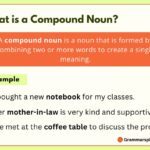
A compound noun is a noun made up of two or more words that work together as a single thing. These words can be joined together, written separately, or connected with a hyphen.
Example Sentences:
Fatima bought a new notebook for her English class.
Ahmed is waiting at the bus stop for his ride home.
Bilal’s mother-in-law is visiting for the weekend.
Types of Compound Nouns
Compound nouns are categorized based on their structure. Below are the three main types:
1. Closed (Solid) Compound Nouns
These compound nouns are written as a single word without spaces or hyphens.
Examples:
- Toothbrush
- Notebook
- Sunflower
2. Open (Separated) Compound Nouns
These compound nouns consist of two or more words written separately but function as a single unit.
Examples:
- Bus stop
- Full moon
- High school
3. Hyphenated Compound Nouns
These compound nouns include a hyphen to connect the words, often for clarity or pronunciation.
Examples:
- Mother-in-law
- Check-in
- Brother-in-arms
Formation of Compound Nouns
Compound nouns are formed by combining different parts of speech.
| Formation | Examples |
|---|---|
| Noun + Noun | Basketball, Bedroom |
| Adjective + Noun | Greenhouse, Full moon |
| Verb + Noun | Swimming pool, Driving license |
| Preposition + Noun | Underworld, Afterthought |
| Noun + Preposition | Passer-by, Hanger-on |
| Verb + Preposition | Check-in, Break-up |
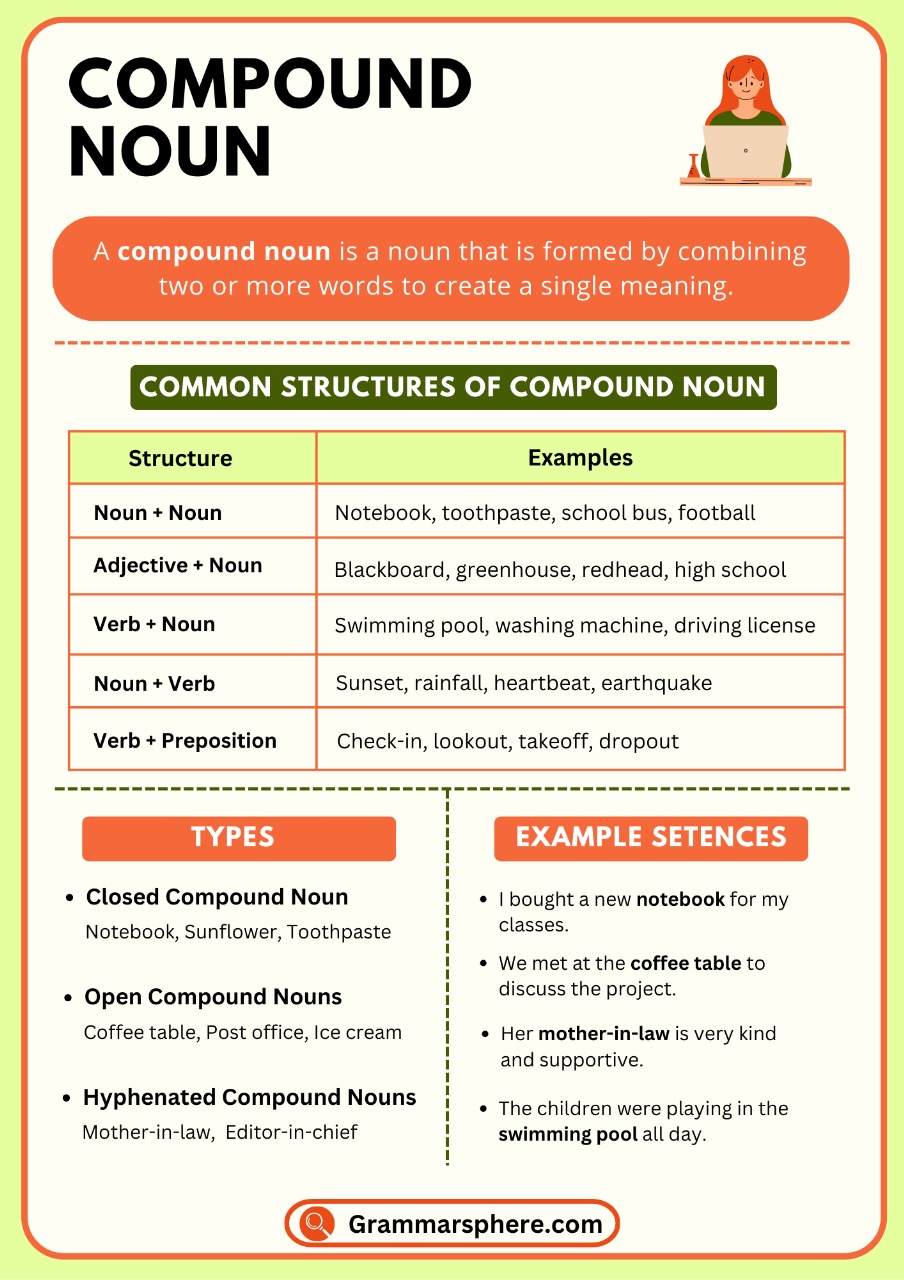
Rules for Forming Compound Nouns
| Rule | Explanation | Examples |
|---|---|---|
| 1. Common Word Combinations | Compound nouns are formed by joining different types of words. | toothbrush, swimming pool, greenhouse |
| 2. Closed Form | The words are written together as one word. | notebook, sunflower, football |
| 3. Open Form | The words are written separately with a space. | bus stop, ice cream, full moon |
| 4. Hyphenated Form | The words are connected with a hyphen (-). | mother-in-law, check-in, six-pack |
| 5. Pluralization Rule (Single Word) | Add -s to the end of the word. | toothbrush → toothbrushes |
| 6. Pluralization Rule (Hyphenated) | Add -s to the main noun in the compound. | mother-in-law → mothers-in-law |
| 7. Pluralization Rule (Open Form) | Add -s to the main noun if applicable. | bus stop → bus stops |
Compound Nouns in Sentences
- Fatima bought a new notebook for her English class.
- Ahmed is waiting at the bus stop for his ride home.
- Bilal’s mother-in-law is visiting for the weekend.
- The kids are playing basketball in the playground.
- We must check in at the check-in counter before our flight.
- Aisha placed a bookmark in her favorite novel.
- The firefighter quickly extinguished the flames.
- Zainab enjoys watching the sunrise from her bedroom window.
- The swimming pool is crowded during summer vacation.
- Hassan packed his suitcase for the long trip.
Common Mistakes with Compound Nouns
Many learners struggle with proper spelling, hyphenation, and spacing of compound nouns. Here are common mistakes:
❌ I saw a full-moon last night.
✅ I saw a full moon last night.
❌ Let’s go to the swimming-pool.
✅ Let’s go to the swimming pool.
❌ My mother in law is very kind.
✅ My mother-in-law is very kind.
FAQs
1. What is a compound noun in simple words?
A compound noun is a noun made up of two or more words that together form a single concept, such as “toothbrush” or “bus stop.”
2. How can I identify a compound noun?
A compound noun functions as a single unit of meaning and can be written as one word (notebook), separate words (bus stop), or hyphenated (mother-in-law).
3. Are all compound nouns hyphenated?
No, compound nouns can be closed (toothbrush), open (high school), or hyphenated (mother-in-law), depending on their structure and usage.
4. Can adjectives be part of compound nouns?
Yes, some compound nouns include adjectives, such as “full moon” and “greenhouse.”
5. Why do some compound nouns have different spellings?
The spelling of compound nouns depends on grammar rules, pronunciation, and common usage. Some evolve over time to be written differently.
Conclusion
Mastering compound nouns is essential for expanding vocabulary and improving writing skills. By understanding the types, formation rules, and common mistakes, learners can use compound nouns correctly in everyday communication. Keep practicing with real-world examples to enhance your English fluency!
You May Also Like

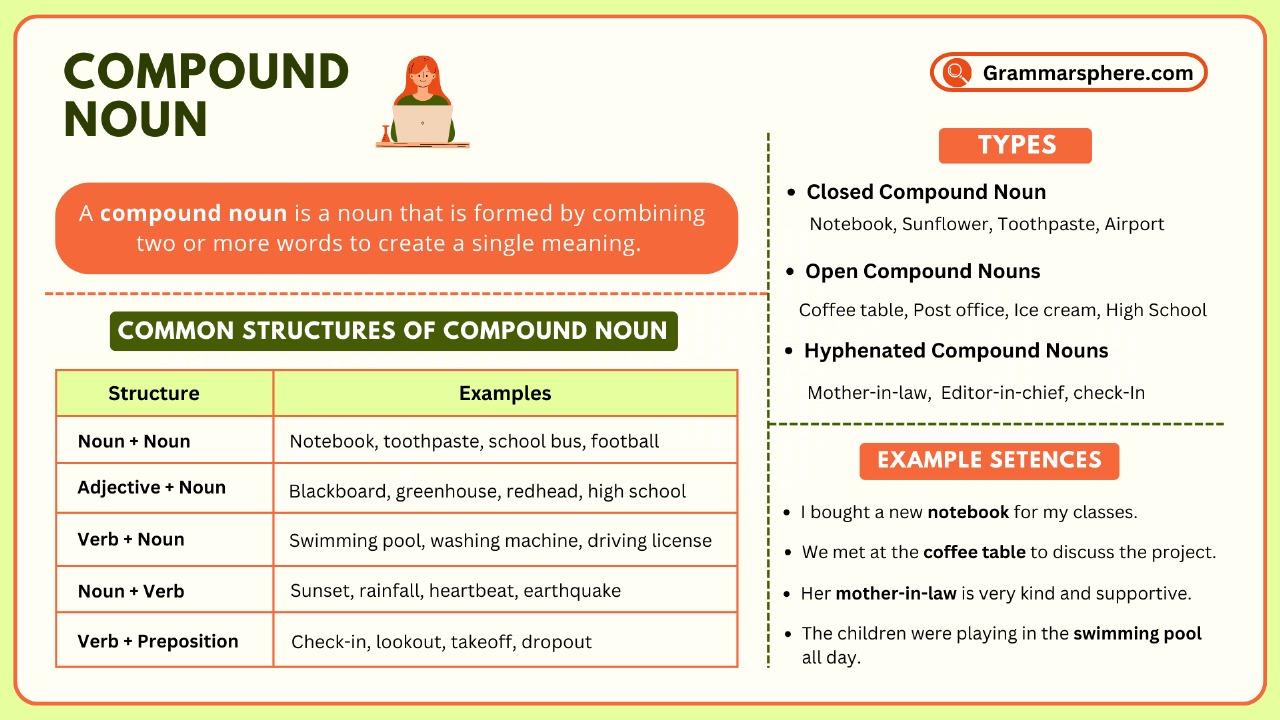
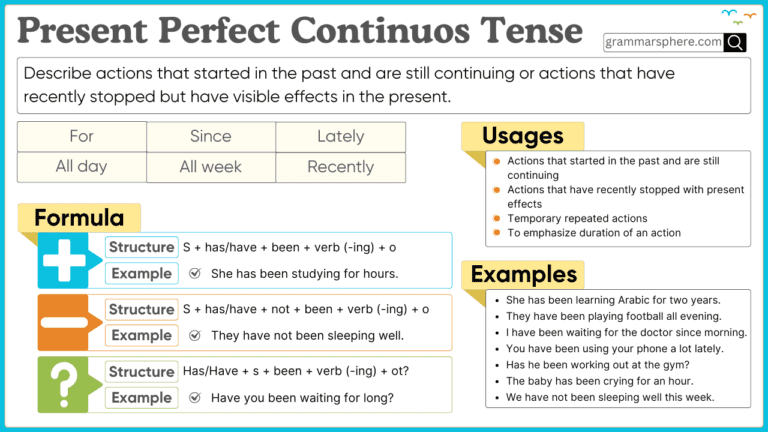
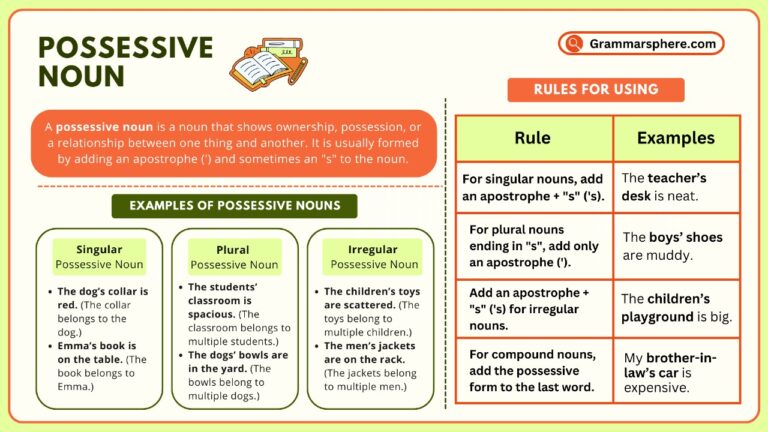
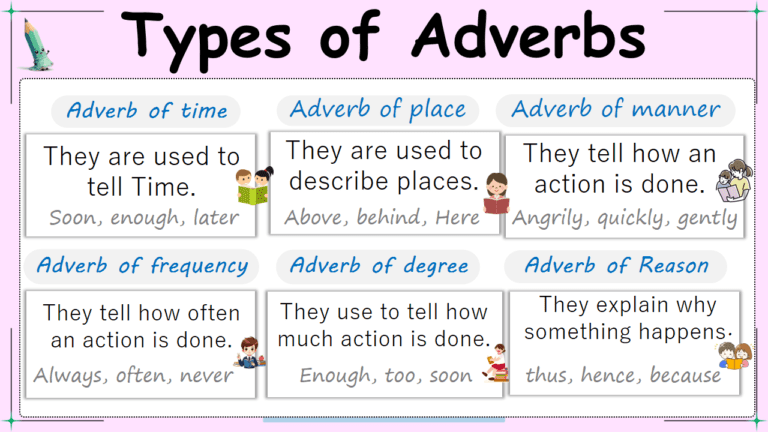
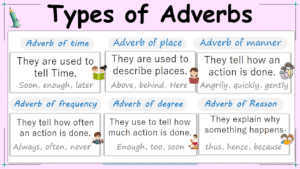
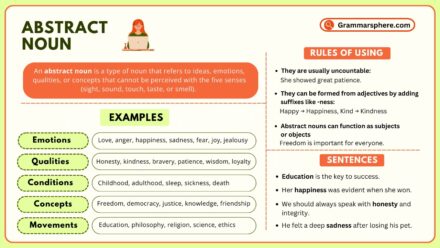
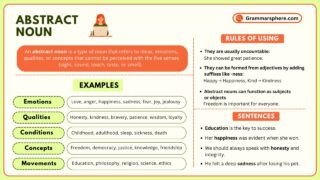
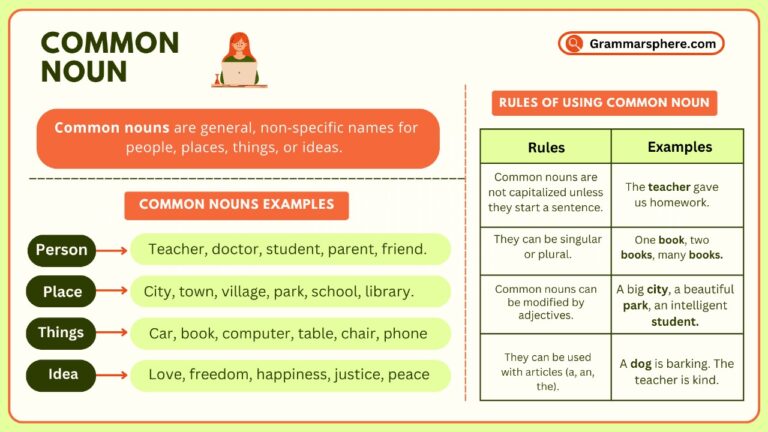
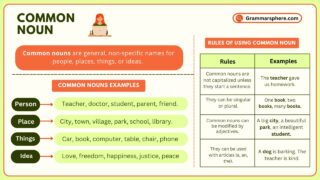
Leave a Comment